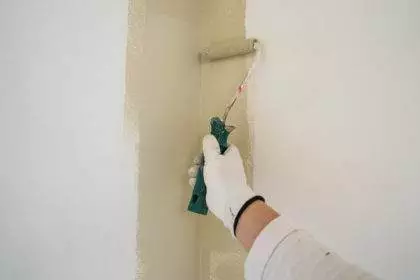Cleaning Interior Walls

Like anything else in a home, interior walls need cleaning. Unlike most other surfaces, however, they need to be treated gently, with as little chemical abrasion as possible, if you want to preserve the finish.
When cleaning interior walls, think like a minimalist: less is more. Water on a cellulose sponge should be your first go-to. And, if that isn’t strong enough, try a diluted solution of dish washing soap. Should you attempt to use a more robust cleaning product, you may well regret it: strong solvents, remember, can damage the film on your finish. When you begin cleaning a wall, the most common sense approach is to have two separate sponges and two separate buckets at your disposal: one for your cleaning solution, the other for rinsing water. And, as obvious as this may sound, keep in mind to begin from the bottom of the wall, working your way up to avoid unsightly streaks. To avoid damaging your paint, use circular motions when applying the sponge, and don’t forget to dry off excess water so moisture doesn’t seep into the film.
Certain finishes, especially those of deep color, may rub off a little when cleaning. That’s particularly true of saturated matte and low-sheen finishes, which don’t hold up to abuse as well as their high-gloss cousins. In general, a little pigment loss is totally fine: once the wall dries, the finish should appear unblemished once again (unless, of course, you’ve used too much force when scrubbing, in which case damage to your finish is indeed possible).
Now, a few final words: If you’re dealing with a latex finish and have recently painted, wait a couple of weeks before cleaning so it can fully cure. An uncured paint job is ripe for damage during cleaning. And, once again, use the gentlest method possible to achieve your desired results. If you’re dealing with truly, unbearably dirty walls with, say, stubborn grime or dark stains, you can add a small amount of ammonia or laundry detergent to your cleaning mix for the extra elbow grease. Beyond that, you risk venturing into dangerous territory. So use a light touch, be as minimally abrasive as possible, and enjoy your newly cleaned walls.
READ OUR
Related Articles
Locations






